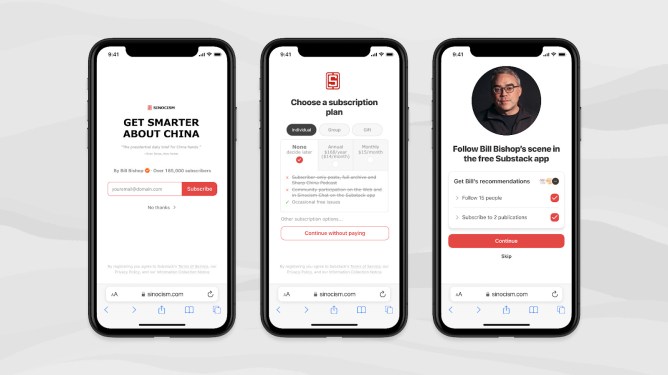In a significant update, Substack is overhauling its peer-to-peer recommendation system to help writers expand their reach and potentially gain more subscribers and followers. The company announced today that it will now allow writers to curate and share a list of publications for their readers to subscribe to.
A Step Forward from Centralized Discovery
The change represents a significant shift away from the era of social media based on centralized discovery and control. Substack is instead focused on fostering a peer-to-peer recommendation system that will help writers grow their audiences. Unlike most social media networks, which leverage algorithms for their recommendation systems, Substack is allowing writers to curate their own networks of recommendations.
New Features and Benefits
Now, when a reader subscribes to someone’s publication on Substack, they will see the option to opt-in to a package of people to follow based on the writer’s recommendations. In the past, this screen would show a maximum of three publications that the writer recommends. However, with the new update, readers will see a list of as many publications and profiles as the writer wants to recommend.
Readers can select or unselect the people or publications they are interested in, after which their feed will start to include notes and posts from the people in that network.
Increased Engagement and Subscriptions
Substack says the update will help writers build up goodwill with other writers by helping them reach more people. The platform will also show writers how many subscriptions and follows they have driven for people in their network.
The company claims that recommendations on the platform drive 50% of all new subscriptions and 25% of new paid subscriptions. Early data shows that Substack’s approach to recommendations increases both the number of subscriptions and followers that publications and users get.
Growing Success
Substack also announced today that more than three million readers subscribe to paid newsletters on its platform, up from two million a year ago. This significant growth is a testament to the company’s focus on empowering writers and helping them build their audiences.
Controversy and Criticism
However, Substack’s approach to content moderation has been met with controversy and criticism. The company revealed earlier this year that it wouldn’t ban Nazi newsletters on its platform. Substack CEO Hamish McKenzie stated that while the platform bans posts with "incitements to violence," it will stick with a decentralized approach to content moderation.
As a result of this stance, notable writers like Casey Newton and Ryan Broderick decided to leave Substack. The company has faced further fallout as a result of its refusal to commit to proactively removing Nazi content.
Implications and Future Directions
The updated peer-to-peer recommendation system is a significant development for Substack and the wider publishing industry. It remains to be seen how this new approach will impact writers, readers, and the broader online ecosystem.
However, one thing is clear: Substack’s focus on empowering writers and fostering a community-driven approach to content discovery has the potential to revolutionize the way we consume and engage with online content.
What’s Next for Substack?
As Substack continues to grow and evolve, it will be interesting to see how the company addresses the challenges and criticisms surrounding its approach to content moderation. One thing is certain: Substack’s commitment to decentralization and community-driven recommendation systems has set a new standard for the industry.
Only time will tell if this approach will lead to further growth and success for writers and readers alike. However, one thing is clear: Substack’s innovative approach to peer-to-peer recommendation has the potential to transform the way we engage with online content forever.
About the Author
Aisha Malik is a consumer news reporter at TechCrunch. She holds an honors bachelor’s degree from University of Toronto and a master’s degree in journalism from Western University. Aisha covers news on consumer technology, focusing on emerging trends and innovations that shape the industry.
Related Articles
- What will this year bring in VC? We asked a few investors
- Uber CEO Dara Khosrowshahi resigns from self-driving truck startup Aurora’s board
- Inside the wild fall and last-minute revival of Bench, the VC-backed accounting startup that imploded over the holidays
Subscribe to TechCrunch
Get the latest news on technology, startups, and innovation delivered directly to your inbox. Subscribe now and stay ahead of the curve!



